This Lumintop FW3A was purchased, by me, with my own money at the regular group-buy price available to the other 2000 or so people who signed up. I was not incentivized in any way to write this review. The FW3A is available at the group buy price of $36 for XP-L HI and $35 for 219C from Photonphreaks as of this writing.
Concept
The FW3A is a mid-size everyday carry flashlight with three emitters, a TIR optic, running on an 18650 battery and using an electronic switch on the tailcap with a feature-packed open source firmware. It was created by and for flashlight enthusiasts for their own everyday use. It's intentionally easy to change emitters and optics; the firmware is open source; nothing is held together with adhesives, even where it would likely improve reliability. The target price of $30-36 for the group buy puts it solidly in budget enthusiast flashlight territory.
Most manufacturers leave out features or make design decisions based on what they think will appeal to the mass market rather than to enthusiasts. Enthusiasts get an occasional nod like an option for a neutral white or high-CRI emitter, but it's rational for manufacturers to pay more attention to larger markets. The FW3A does the opposite: it's usable by anyone who can read and understand the manual, but all potential conflicts between the needs of enthusiasts an the mass market have been resolved in the enthusiasts' favor. I find the concept spectacular. There's a reason I was one of the first people to get on the interest list.
In keeping with the intended target market, this review won't shy away from technical terms or explain them in as much detail as a review of a more consumer-oriented light would.
Design
The FW3A is among the shortest 18650 lights on the market, and is similar in width to most 18650-powered EDC lights at 25mm. The exterior of the light is completely unmarked and finished in a medium-grey anodizing with a dark grey (black oxide?) finish on the pocket clip and a light-catching machined finish on the button. There are two bands of moderate knurling for extra grip. The shape is minimalist and has virtually no features that don't follow directly from the light's function. The pocket clip is a ring, rather than friction-fit design, and is designed to expose just enough of the tailcap to provide good purchase when removing the light from a pocket. The clip ring is slightly wider than the body tube or tailcap, causing a hotspot.
Emitters offered for the initial run are the Cree XP-L HI in warm, neutral, and cool white. A high-CRI emitter option in 4000K is expected in the near future, probably using the Luminus SST-20. The delay in availability appears to be due to sourcing issues, as the original high-CRI option was slated to be the Samsung LH351D. The optic is a Carclo 10511, which is narrowly focused, but frosted. There's a glass lens with an anti-reflective coating over the plastic optic.
The uncommon design feature of the FW3A is the tail e-switch. E-switches in budget lights are usually located on the side. Tail e-switches are increasingly common in mass-market lights like the Klarus XT series and Olight M2R, but nobody has paired one with a user interface quite like Anduril, ToyKeeper's feature-packed open source e-switch firmware. That firmware operates a FET+7+1 direct/linear hybrid driver, which trades some efficiency for compactness and brief spurts of raw output. Anduril is spectacular, offering a basic UI simple enough for nearly anyone, with a huge variety of hidden functionality for those who want to look. My only complaints are that it's a little too easy to miss the shortcut to moonlight. I started to write a complaint about the lowest stepped level not being a true moonlight, but thought to check whether that's configurable, and of course, it is.
he FW3A has emphasized compact size and light weight over heatsinking and radiation relative to lights with superficially similar goals like the Emisar D4, so those spurts of max output are indeed brief. I think that's a good trade for everyday carry, and the only major thing about the design that doesn't appeal to me is the low-CRI emitters. That's likely to be fixed soon with the planned release of the Luminus SST-20 in 4000K.
Execution
The FW3A got a better testing phase than a lot of community-partnership projects have had in the past, so most of the bugs were worked out before release. There have, however been a few issues. Very early models had a minor UI glitch, which was fixed before mine shipped. Several people have reported loose driver retaining rings or tailcaps. My driver retaining ring was slightly loose and did not impact function, but might have eventually. A few people have reported dead or improperly soldered LEDs and missing O-rings. Mine was intact.
The build quality does have a couple minor rough edges that may stand out to people who notice good machining. The transition from the body tube to the head feels more abrupt at some points than others. I can't see a difference, but I can feel it if I pay attention. The sides of the clip have visible roughness from the tool used to cut it out. These issues don't matter at all from a functional perspective, but might bother people used to more expensive lights.
I expect QC issues to be cleaned up as production goes on, but there's another issue that may not be: the thermal sensor is not calibrated at the factory. I'd expect that to get fixed, but ToyKeeper communicated the need to do it in advance of production, and all the lights so far have shipped uncalibrated. Temperature check read 28C for me when the light was cool and the actual ambient temperature was around 19C. Calibration must be done, or thermal stepdowns will activate prematurely. Additionally, I experienced spurious stepdowns in muggle mode only until I also set the temperature limit to the default 45C. Fortunately, both the current and maximum temperature are easily set by the user.
So the FW3A, at this stage does have some rough edges. It may not be a good choice for people who don't like to tinker or who don't find flashlights interesting for their own sake. For those of us who do, the rough edges should be no issue. The FW3A is a great design, built well enough, and to a spectacular price point.
Highlights
- Convenient, responsive, and feature-packed UI
- Open-source firmware
- Tail e-switch, used well
- Compact size
- Very secure pocket clip
- Excellent overall ergonomics
- High maximum output
- Very good thermal regulation
- Tint options include a true, near-incandescent warm, rarely offered in modern flashlights
- No glue anywhere
- Modification-friendly
Lowlights
- QC problems are a little too frequent for my liking
- Similar to a Zebralight, timing the shortcut to moonlight can be tricky
- Thermal calibration should be done at the factory
- Muggle mode is prone to spurious thermal stepdowns even after calibration
Details and technical analysis
Versions
The FW3A comes in warm (3200K), neutral (5000K), and cool (6500K) white XP-L HI, and neutral (4000K) white 90 CRI 219C. This is the warm white XP-L HI version. Another high-CRI emitter option, a 4000K, 95 CRI Luminus SST-20 is planned for the near future.
Accessories
The FW3A comes with a user manual, "insert battery from head" card, and spare O-rings. For a budget-priced light aimed at enthusiasts, that's a generous accessory package; many just expect the user to read the UI diagram from the product page.
Modes and user interface
The Anduril firmware is very sophisticated and configurable, but the basic user interface is simple:
| State | Action | Result |
|---|---|---|
| Off | Click | Last-ramp |
| Off | Hold | Ramp-min |
| Off | Double-click | Ramp-max |
| On | Click | Off |
| On | Hold | Increase brightness |
| On | Click, then hold | Decrease brightness |
| On | Double-click | FET-max |
| FET-max | Double-click | Last-ramp |
This is very similar to an Olight, Thrunite, or Acebeam e-switch UI. Some Acebeams even have the similar concept of a lower-turbo and higher-turbo toggled by a second double-click. Absent from most of those is a decrease-brightness action. Ramp-min and ramp-max are configurable, but the defaults are the lowest possible level (under 1 lumen), and the highest regulated level (around 800 lumens).
Here are the secondary modes available:
| State | Action | Result |
|---|---|---|
| On (steady mode) | Triple-click | Switch between continuous dimming and fixed modes |
| Off | Triple-click | Battery check |
| Battery check | Double-click | Cycle between battery check, sunset, beacon, and temperature check |
| Off | Double-click, then hold | Last-used strobe |
| Strobe | Double-click | Cycle strobes (candle, bike, party, tactical, lightning) |
| Strobe | Hold | Adjust speed/brightness up |
| Strobe | Click, then hold | Adjust speed/brightness down |
| Off | Four fast clicks | Lockout |
| Lockout | Hold | Ramp-min (while held) |
| Lockout | Four fast clicks | Off (normal) |
| Off | Five fast clicks | Momentary |
| Momentary | Hold | Last-ramp (while held) |
| Momentary | Disconnect battery | Off (normal) |
| Off | 6 clicks | Muggle mode |
| Muggle | 6 clicks | Off (normal) |
The only way out of momentary is to briefly unscrew the head enough to disconnect battery power. Muggle mode is a simplified version of the main UI with a range of 7 to 256 lumens and no shortcuts. Thermal regulation is a hard stepdown to 7 lumens and sometimes triggers when it shouldn't. ToyKeeper suspects it's due to sensor noise.
I won't detail how to access all the configuration options to keep the length sensible, but here's what can be adjusted:
- Lowest ramp level
- Highest ramp level
- The number of modes in fixed-mode operation (2-150, default 7)
- Lowest fixed mode
- Highest fixed mode
- What the sensor believes the current temperature is
- The maximum allowed temperature before thermal throttling
- Beacon blink speed
One thing that isn't here that I wish was is the ability to turn memory off and replace it with a configurable default level (default: 1x7135, such that all shortcuts but moonlight go to non-PWM levels).
Output, runtime, and efficiency
Advertised performance is with an unspecified high-drain 18650 battery. Tested performance is with a Sony VTC6 3000 mAh 18650 battery rated for 30A continuous discharge when the temperature is monitored and limited to 80C.
Modes listed as n/7 are the default stepped ramp modes. Regulated max and 7/7 are the same.
| Mode | Advertised Lumens | Estimated Lumens | Percent of claim | Advertised throw (FL1 meters) | Estimated throw (FL1 meters) | Percent of claim |
|---|---|---|---|---|---|---|
| Min | 0.5 | - | - | 4 | - | - |
| 1/7 | - | 5 | - | - | 8 | - |
| 2/7 | - | 32 | - | - | 20 | - |
| 3/7 | - | 88 | - | - | 34 | - |
| 4/7 | - | 166 | - | - | 46 | - |
| Muggle-max | - | 256 | - | - | - | - |
| 5/7 | - | 335 | - | - | 65 | - |
| 6/7 | - | 567 | - | - | 85 | - |
| Regulated-max (ramp-max default) | 760 | 813 | 107 | 110 | - | |
| Max (0s) | 2800 | 2913 | 104 | 200 | 189 | 94.5 |
Runtimes without graphs are estimated from power consumption. Regulated-max measurements were taken with fan cooling. Unlike most lights, there are no advertised runtimes for the FW3A.
| Mode | Estimated lumens | Graph | Time to 80% | Time to 50% | Time to 10% | Tailcap current (mA) | Efficiency (lm/W) |
|---|---|---|---|---|---|---|---|
| Standby | - | - | - | - | ~17 years | 21.7 uA | - |
| Min | - | - | - | - | ~4 months | ~1 | - |
| 1/7 | 5 | - | - | - | 7 days | 17.5 | - |
| 2/7 | 32 | - | - | - | 33 hours | 89 | - |
| 3/7 | 88 | graph | 12 hours | 12 hours | 12 hours | 239 | 95 |
| 4/7 | 166 | - | - | - | 6.7 hours | 446 | - |
| 5/7 | 335 | graph | 186 minutes | 195 minutes | 200 minutes | 954 | 90 |
| 6/7 | 567 | - | - | - | 1.8 hours | 1670 | - |
| Regulated-max | 813 | graph | 9.5 | 71 | 75 | 2880 | 81 |
While regulated-max first drops below 80% at 9.5 minutes, it stays very near that level until the 71 minute low-voltage stepdown. This level will experience thermal throttling in most environments. The 7135 chips do not have significant heatsinking, so they can trigger some thermal throttling even when the body of the light isn't very hot. This effect is more pronounced when the battery is full, as linear regulators turn any voltage the LEDs don't need into heat.
Additional graphs
Light quality
The FW3A is a triple using the Carclo 10511 frosted narrow spot optic. This optic produces a smooth beam pattern with intensity increasing in a gradient toward the center, but no distinct regions of the beam like the hotspot a reflector usually produces. It also produces no significant artifacts like many multi-emitter beams do. For anyone who doesn't like that, see the modifications section at the bottom; you can have anything but throwy.
The XP-L HI 7A has a nice tint if 3000-3300K is your thing. It's noticeably rosy next to an incandescent and looks good on a white wall. It is, however low in CRI with about 70 being typical. This does make for noticeably dull, muted colors, especially outdoors. I'm eager for the SST-20 version, which will likely look worse on a monochrome surface, but better everywhere else as well as improving the user's ability to recognize details in objects.
The FW3A uses fast PWM at most levels. It is not visible to my eyes under any circumstances, and its effects are further mitigated by leaving the lower channels on steady, so it's cycling between two levels rather than between on and off. An electronic rolling shutter, as used in most smartphone cameras may record scanlines at very high shutter speeds, but this usually requires pathological camera settings or attempting to photograph the emitters directly.
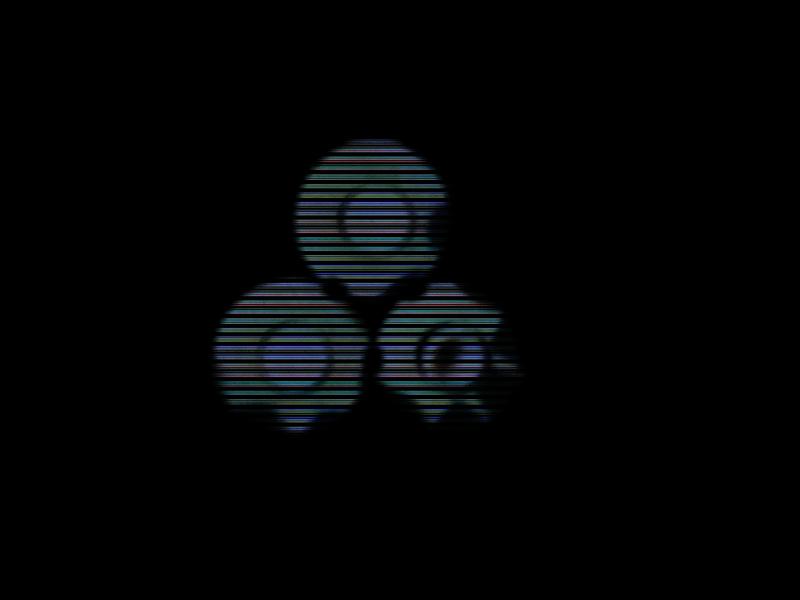
White wall
vs. BLF 348 219B
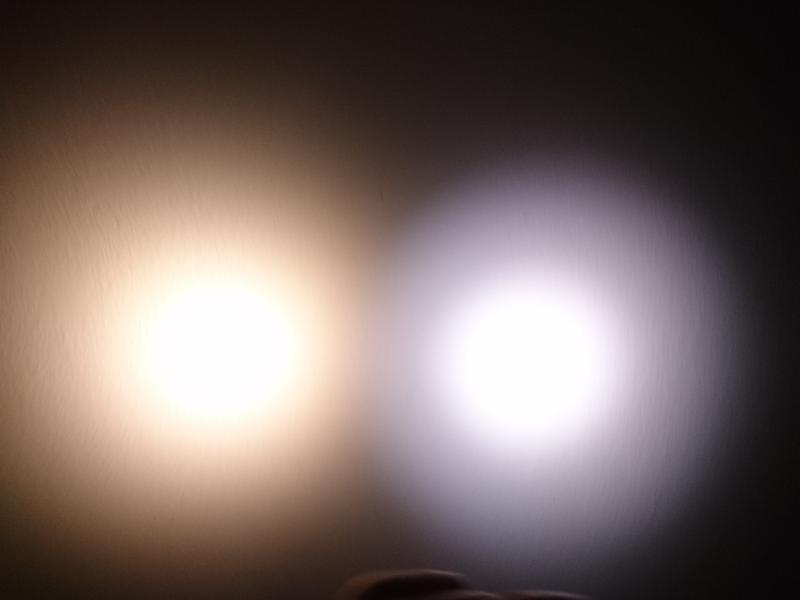
Outdoor
.jpg)
For comparison: Astrolux S41 (219B quad)
.jpg)
Construction
The FW3A is well built where it counts. It's airtight and waterproof. The threads work smoothly. The electrical bits make contact reliably if everything is tightened, which it may not be from the factory. The clip holds reliably. It's a bit rough in points where it matters less though, with some machining not feeling quite symmetrical, especially where the head meets the body on mine. Exposed anodizing looks even and smooth to me, but not so precise inside the body tube.
If you're not a reviewer or a machinist, you probably won't notice, but the FW3A's low price does show through here just a bit.
Lumintop's product page claims IP68 waterproofing. A brief immersion showed no signs of water ingress.
Ergonomics
The shape of the FW3A is about as perfect as an 18650-powered EDC light can be. The clip has just the right amount of ramp to deal with thick pockets, but doesn't stick out enough to snag on things. The tension is enough to be secure, but it isn't hard to remove from a pocket. The tailcap sticks out enough to be easy to grab, and no more (though I'm aware some prefer deep/flush carry). The button is impossible to miss when trying to press it, but hard to press by accident. There's enough knurling where it's needed for easy manipulation, and no more. Hammer and cigar grips both work and provide access to the button with one hand.
Ergonomics are probably the FW3A's greatest strength for the average user, and I have but one complaint: the ring of the pocket clip sticks out a bit from the body and tailcap, which can be a hotspot.
Batteries
The FW3A requires a single 18650 Li-ion rechargeable battery, which is not included. Batteries should be rated for at least 10A continuous discharge. Peak current may exceed that number, but thermal regulation limits that to a few seconds at a time. Protected batteries do not fit. While there are springs on both ends of the battery tube, they're short and primarily intended for maintaining reliable contact rather than allowing variation in battery length. Batteries should be very close to 65mm long.
Modification potential
If ever there was a factory flashlight built with modification in mind, the FW3A is it. Nothing is held together with adhesives, even though unscrewing the tailcap is likely to lose parts. The Carclo 10500 series optics offer more and less focused options, clear and frosted options, and even an elliptical beam that might make a decent bike light. Replacing the optic is nearly as easy as replacing the battery.
Replacing LEDs can also be easy, with vendors like MTN Electronics, Intl-Outdoor, and Kaidomain selling LEDs pre-mounted on compatible triple boards. Anyone with minimal soldering skills has several LED families, color temperatures, and CRI ratings available to them. Those who can reflow onto the original, or a third-party board have even more options, including any Cree XP-series, Samsung LH351 series, LG 3535, Luxeon V, Nichia 219 and 319 series, and Luminus SST-20.
I chose the Nichia 219B sw45k R9080 for this FW3A.
The firmware, too is easily replaced. The manual even includes the URL to a BLF thread detailing the procedure. My emitter of choice for my first FW3A is the Nichia 219B, which can't handle the maximum FET level. It needs a tweak to the firmware, which ToyKeeper has already published.
I prefer a shortcut to medium instead of memory, which is a trivial change to make. I also prefer moonlight only activating when its time gate is reached, which I've changed in a crude manner and may refine later. I've published that change here and will probably keep it up to date. It's not pretty, because I have very little idea what I'm doing with bzr. I may eventually rehost it on Github or something later, but for now I'm making some attempt to stick with the original VCS. This also includes ToyKeeper's latest thermal regulation revisions, which should result in less ringing while trying to find a stable level. Yes, it's 2019, and there are software updates for flashlights.
Here are the performance results with the 219B:
| - | 1x7135 | 8x7135 | 50% FET |
|---|---|---|---|
| Lumens | 139 | 942 (0s) / 763 (30s) | 1792 (0s) |
| Throw 10511 | 37m | 95m (0s) | 134m (0s) |
| Throw 10507 | 39m | 104m (0s) | 183m (0s) |
With a 10507, vs the BLF 348 219B on the right. Oddly, the 348 looks more purple in the photo, which it didn't in person.
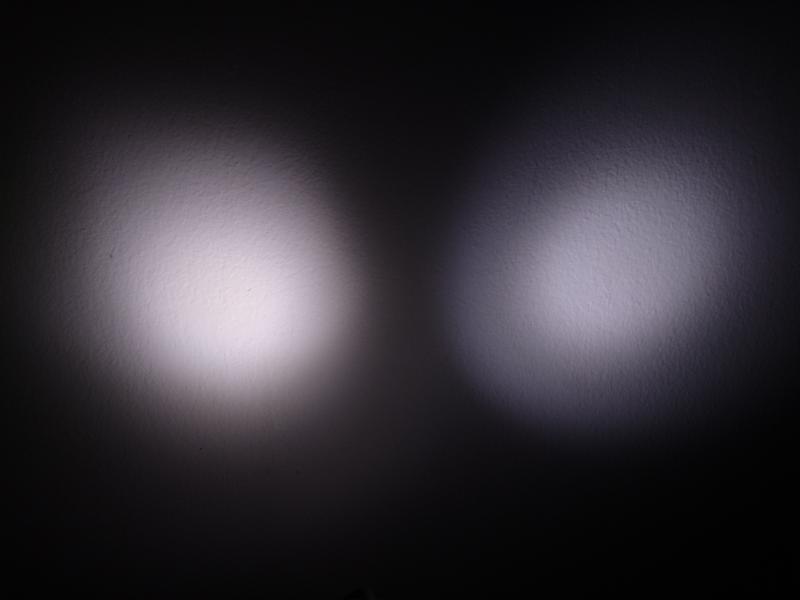
Outdoors, with the 10507.
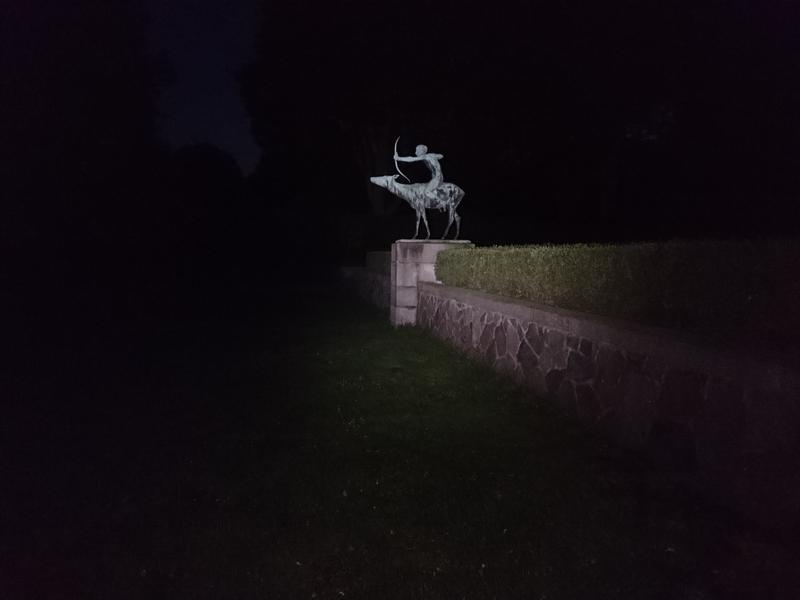
I tried polishing a 10511 using 2000 grit sandpaper and 0.5 micron diamond paste as I've seen it suggested that results in more throw while still having a smoother beam than the 10507. It didn't; instead, it reduced output and throw slightly without any visible effect on the beam pattern.
Here's 6 minutes of the new thermal behavior with 219Bs and the 50% FET limit. Output climbs slowly after the initial throttling and stabilizes around 3 minutes. Fan cooling is applies at 3.5 minutes and results in a gradual increase in output through the end of the test.
.JPG)
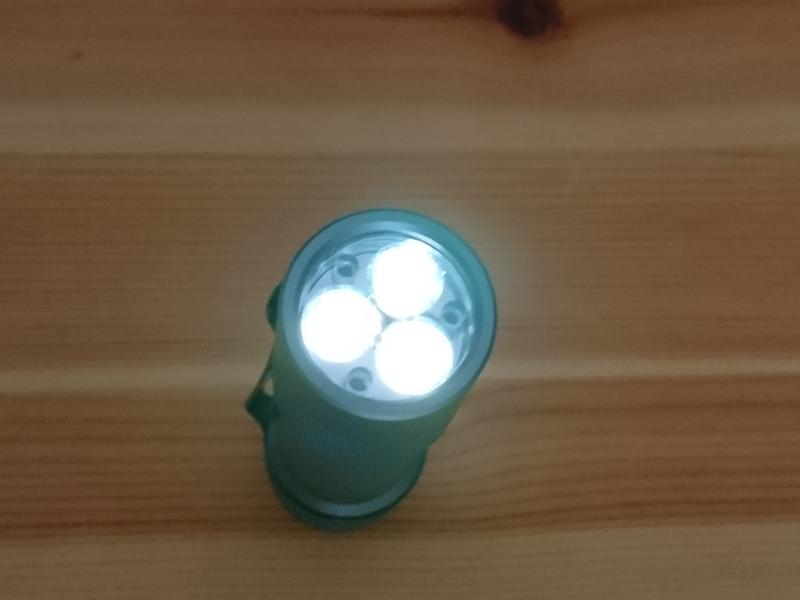
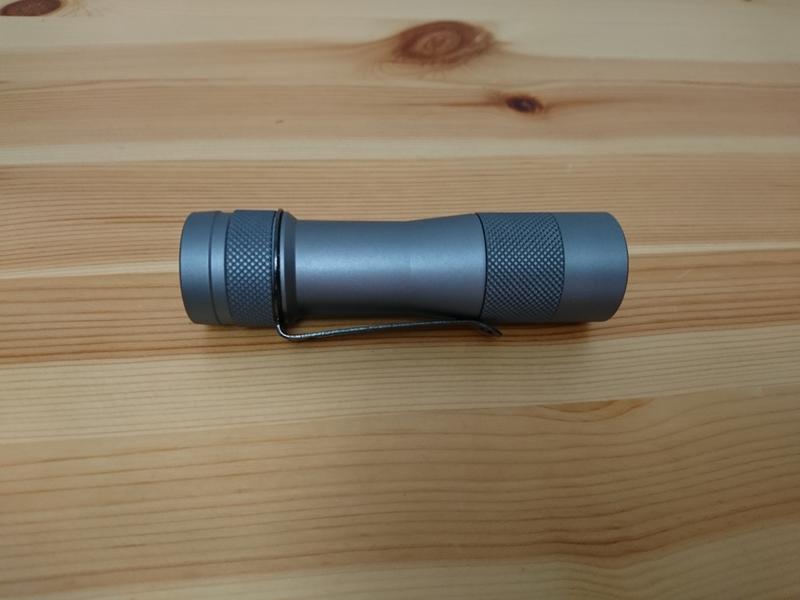
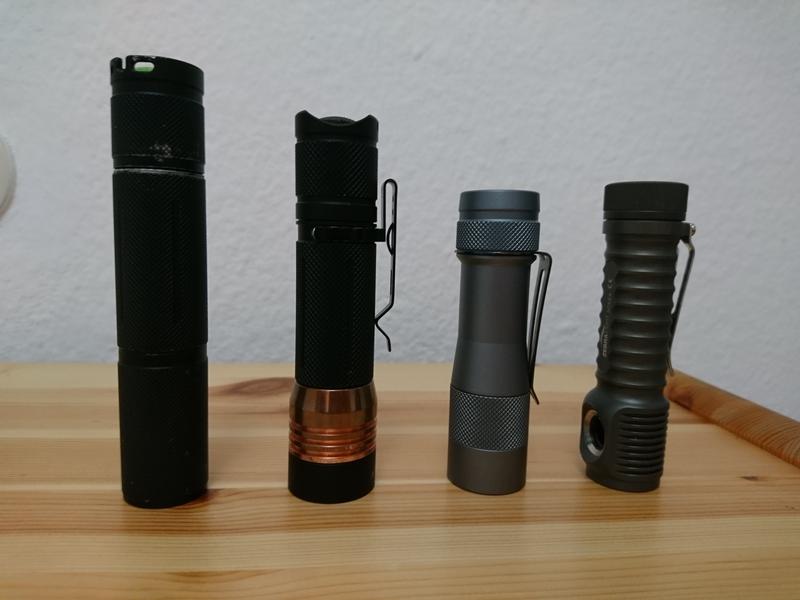
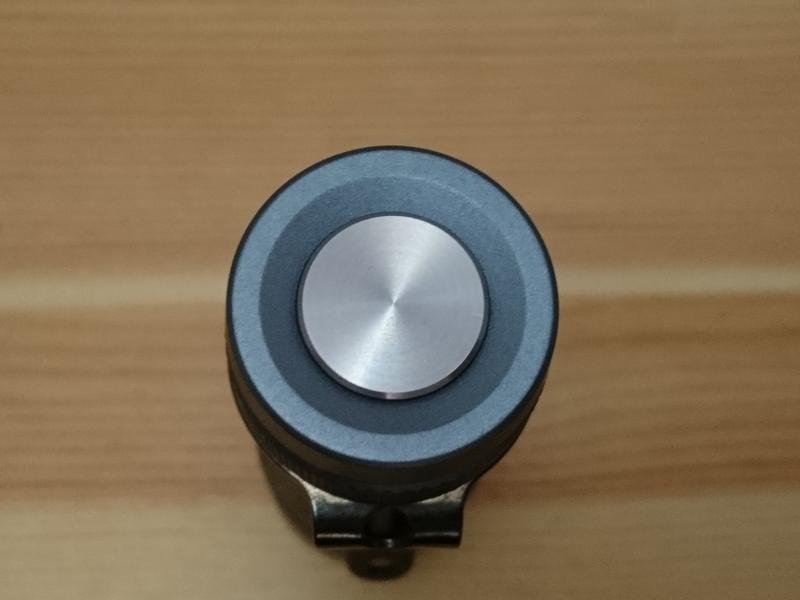
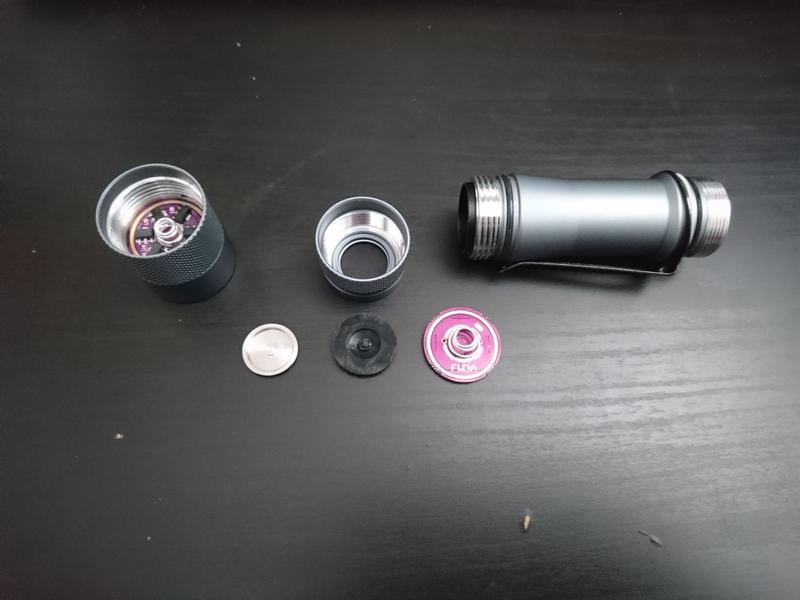
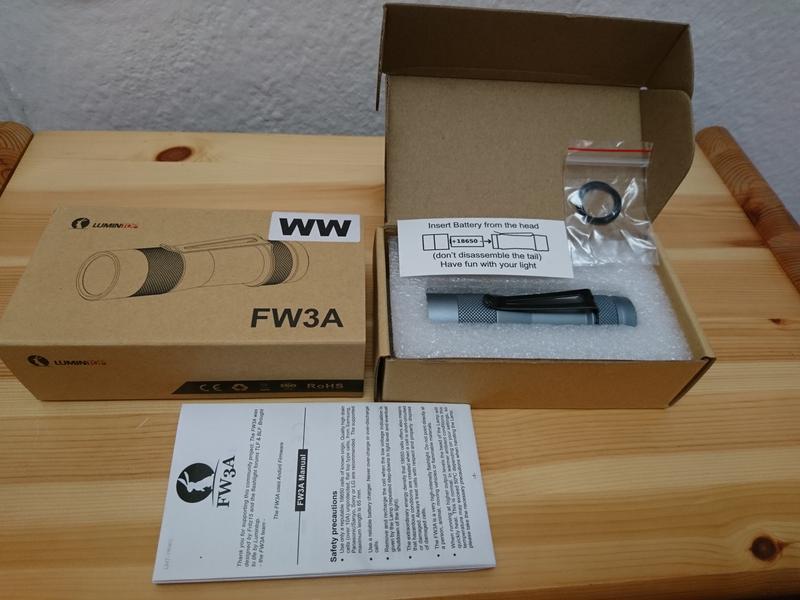
.JPG)
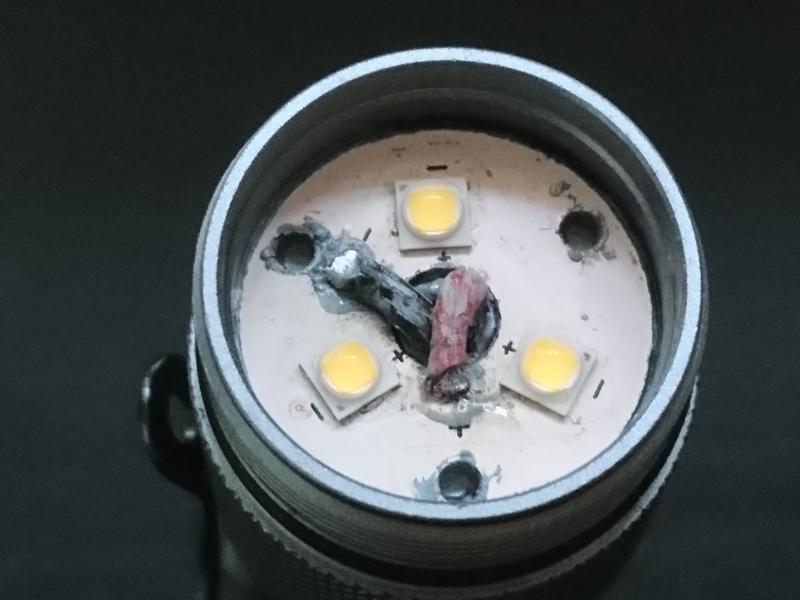
Comments